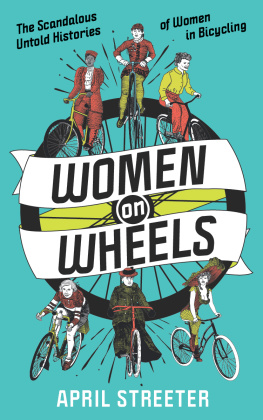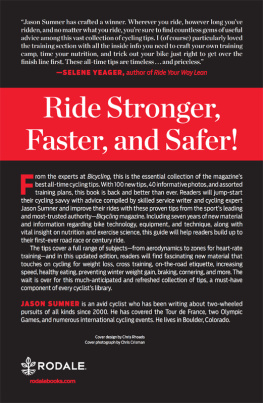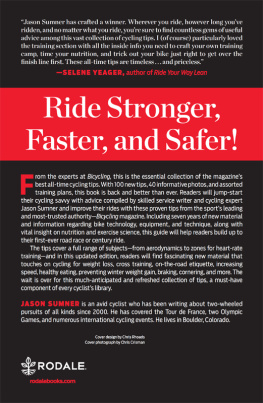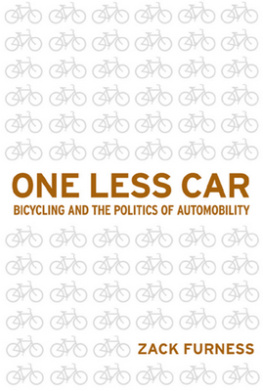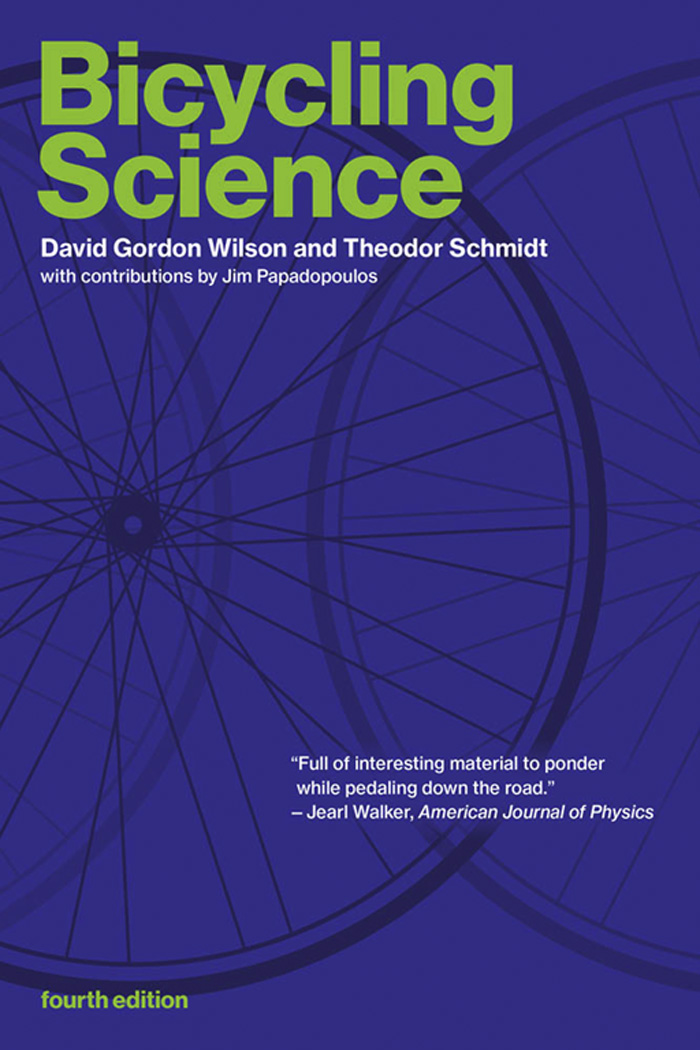
Bicycling Science
Bicycling Science
Fourth Edition
David Gordon Wilson and Theodor Schmidt
with contributions by Jim Papadopoulos
The MIT Press
Cambridge, Massachusetts
London, England
2020 Massachusetts Institute of Technology
All rights reserved. No part of this book may be reproduced in any form by any electronic or mechanical means (including photocopying, recording, or information storage and retrieval) without permission in writing from the publisher.
This book was set in ITC Stone Serif Std and ITC Stone Sans Std by Toppan Best-set Premedia Limited.
Library of Congress Cataloging-in-Publication Data
Names: Wilson, David Gordon, 19282019 author. | Schmidt, Theodor
(Bernhard), 1954 author. | Papadopoulos, Jim, contributor.
Title: Bicycling science / David Gordon Wilson and Theodor Schmidt ; with
contributions by Jim Papadopoulos.
Description: Fourth edition. | Cambridge, Massachusetts ; London, England :
The MIT Press, [2020] | Includes bibliographical references and index.
Identifiers: LCCN 2019024252 | ISBN 9780262538404 (paperback) | ISBN
9780262357531 (ebook)
Subjects: LCSH: BicyclesDynamics. | BicyclesHistory. | Human powered
vehicles.
Classification: LCC TL410 .W546 2020 | DDC 629.227/2015313dc23
LC record available at https://lccn.loc.gov/2019024252
10 9 8 7 6 5 4 3 2 1
Contents
Preface
In 2017 The MIT Press asked me to consider bringing out a fourth edition of Bicycling Science. I was impressed with its confidence in the book and with the challenge that a fourth editing presented. The first three editions were lucky in that there was a great deal of interest, at the time they were published, in bicycles in general and in experimental innovative bicycles in particular. The International Human Powered Vehicle Association (IHPVA) was founded in the mid-1970s, leading to a wide variety of new designs and large increases in speeds and performances of new bicycle types. Bicycle speed records are nowadays regularly set at speeds of well over 80 mph, 135 km/h, 37.5 m/s. (These records are not wholly valid, because they can be set at the limits of permissible downslope, wind, and so on.) It is a potent time for bicycling, because many large cities have racks of standard bicycles that can be picked up fairly easily for rental use. Cars are facing greater restrictions because of the emissions that are still involved. Electric drive is becoming increasing popular. Improvements are forecast in the types of batteries used for electric bicycles and for regular motor vehicles. More exercise is prescribed for greater health.
These major developments lead many to forecast a new period of greater use of bicycles in cities. Therefore, while there is no longer a sense of excitement over new types of bicycles, there is a sense that they have matured and can be quickly produced for wider use for the benefit of users and nonusers.
In the third version of this book, Jim Papadopoulos largely wrote the text of chapters 2, 4, 6, 8, and 10, which was insufficiently acknowledged. In this heavily revised fourth version, a great deal of Jims original material remains in chapters 2 and 8 and some in chapters 4 and 6.
I have been very lucky that Theo Schmidt (see figure 8.5) responded to an invitation to collaborate on the changes needed to produce the fourth edition. He and I have worked together in many IHPVA activities. We have both been chair of the IHPVA and editor of its technical journal Human Power, and we have worked together on the Human Power eJournal, of which Theo is currently the editor and also a member of the World Human Powered Vehicle Association rules and records committee. He earned a diploma in physics and astronomy at the University of Basel and graduated in physical oceanography and electronic engineering at the University of Wales. Theo joined the British human-powered vehicle club (BHPC), became vice-president of Future Bike in Switzerland, and participated in the Swiss Tour de Sol with his own vehicles, including an electric bicycle with a continuously variable transmission and a semiamphibious solar hybrid HPV. He started working on an extraordinary range of projects, including kite research and construction of early human and solar-powered vehicles and boats, on one of which, a semiamphibious HPV, he attempted to travel from London to Paris (but gave up before reaching the middle of the English Channel, then almost made it later on a solar boat without batteries). He has his own research and development company working in these broad areas, and some of his projects are illustrated in this edition. Readers will appreciate the experience and values that he has brought to the coverage.
David Gordon Wilson
Cambridge, Massachusetts, February 2019
Im honored to have been invited by Dave Wilson and The MIT Press to help with this fourth edition of Bicycling Science, as I have neither Dave Wilsons literary writing style nor Jim Papadopouloss mathematical engineering knowledge. But I think Im a good editor, and this heavily revised new edition contains most of the material from the third edition and follows its structure, except for the chapter on materials and the appendixes, which we reluctantly left out of the book this time. Many thanks to the MIT Press staff for their patient help and to Nick Green (BHPC) and Michael Harrup (MITP) for proofreading and copyediting.
Most of the text and many drawings are those of Dave Wilson and Jim Papadopoulos from the third version, and there is also some new text from Dave. Ive added some text and a great many updates, new references, and new figures.
There is now a great deal of information available on the internet, so much that relevant resources can be difficult to find amidst all that is there. We now include URLs (internet addresses) for most references that are actually available and interesting. Most are too long to type, so as a service to readers weve put a list of links at hupi.org/BS4/. (The Human Power Instituteon whose website the list residesis the brainchild of the late Richard Ballantine, whom Dave and I helped to put the institute together, together with three former IHPVA board members or officers). Short, easy-to-type URLs (like that above) are mostly placed within the text instead of the reference section; your browser will add https:// and perhaps www automatically. (Sometimes https:// will not work, and you must enter http:// manually.)
A note on units: equations without given units work in any consistent system. When units are given, we have tried to use those from the International System of Units (SI) where possible. However, we often also use customary units, especially for time (hours, etc.) and angles (degrees or slope). In these cases, formulas work only with the units given. A particular challenge for any technical text is the representation of weight. Even physicists often mix up an objects mass (kg, lb, sl), a relatively immutable basic property of all matter, with its weight (N, pdl, lbf), which is a somewhat variable force that the earths gravity exerts of a mass. In this book we also switch somewhat randomly between the two, except in the section Cycling on the Moon, where the distinction is important. For quantities we try to give the most widely used units if not SI, for example, kilometers per hour for many cycling records, or sometimes miles per hour. It isnt scientific, and it isnt consistent, but it should, we hope, please a large spectrum of different readers.
Have a lot of fun!
Next page



